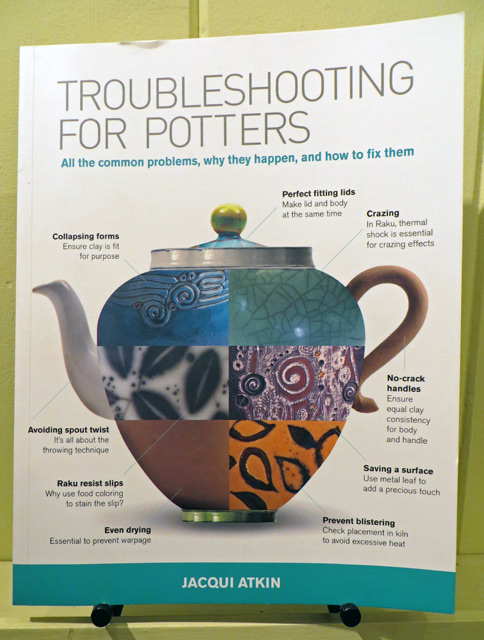
If you’re involved in clay, you certainly know you’re involved with problems. Some of them you asked for just by stepping into your creativity. Some are borne of being a beginner in the medium and you learn by doing, making plenty of mistakes, and doing again. These are good problems to have! Dig in and have a blast.
Then there are the un-asked-for and un-fun problems. The ones that repeatedly spoil things and you can’t seem to shake. Whyyyyyy? The possible solutions start to be more specific and scarcer. Maybe you find yourself scrambling to learn the applied chemistry, math and physics you thought you never needed. Or you’re seriously delving into a study of cracks and explosions, dunting and shivering. Advice differs. Opinions vary widely and sometimes there are just too many of them. And now it seems you need help with triaging both the problems and the possible remedies.
You need an intelligent and reliable reference book.
Around since 1975, now in its Sixth Edition, The Potter’s Dictionary of Materials and Techniques by Frank and Janet Hamer is probably more than you ever want to know – unless you secretly like reading dictionaries (ahem…) – but man it will nail so many problems so quickly, you just may want to maintain easy access to a copy. It’s just what you think a dictionary would be: 400 A-to-Z comprehensive pages of full disclosure and nothing less.
A chattier and more illustrated book – and it looks like it’s only available remaindered or used, but it’s cheap – is Practical Solutions for Potters by Gill Bliss. Besides illustrated Q and A sections on Equipment, Materials, Handbuilding, Throwing, Decorating, Glazing and Firing, there’s a valuable chapter on Form, Function and Design. Bliss poses the questions and then answers them. You may or may not find what you’re specifically looking for, but it’s an approachable start.
What I really sat down to write about today is the book illustrated up top: Troubleshooting for Potters by Jacqui Atkin. Simpler than the Hamer’s dictionary, more comprehensive than Bliss’ curated Qs and As, what you have here is just smart ceramic troubleshooting. Atkin covers Clays, Forming, Bisqueware, Surface Decoration and Firing, but wisely sticks to the Usual Suspects. That’s plenty! Each chapter is richly illustrated with comprehensive Best Practices and Fix-Its advice. What really takes this book into the empyrean, though, is the 25 diagnostic pages in the beginning titled “What’s the Problem?” In well-laid-out user-friendly chart form, she breaks it down: there are 100 listed Problems, each with 1-8 possible Causes, each Cause having 1-5 suggestions for how to “Fix By…” It is a genius reference and worth the $22 price, even new and undiscounted straight off the bookstore shelf. Get yours. I rate it the same as the entertaining Daym Drops: It’s a Five All Day.
–Liz Crain, who finds dictionary entries rhythmic and soothing, loves a good Q and A dialogue, and is a big fan of thoughtfully-distilled charts, even if they spread over 25 pages. Mostly she loves getting expert help with exactly what she needs, no more no less.